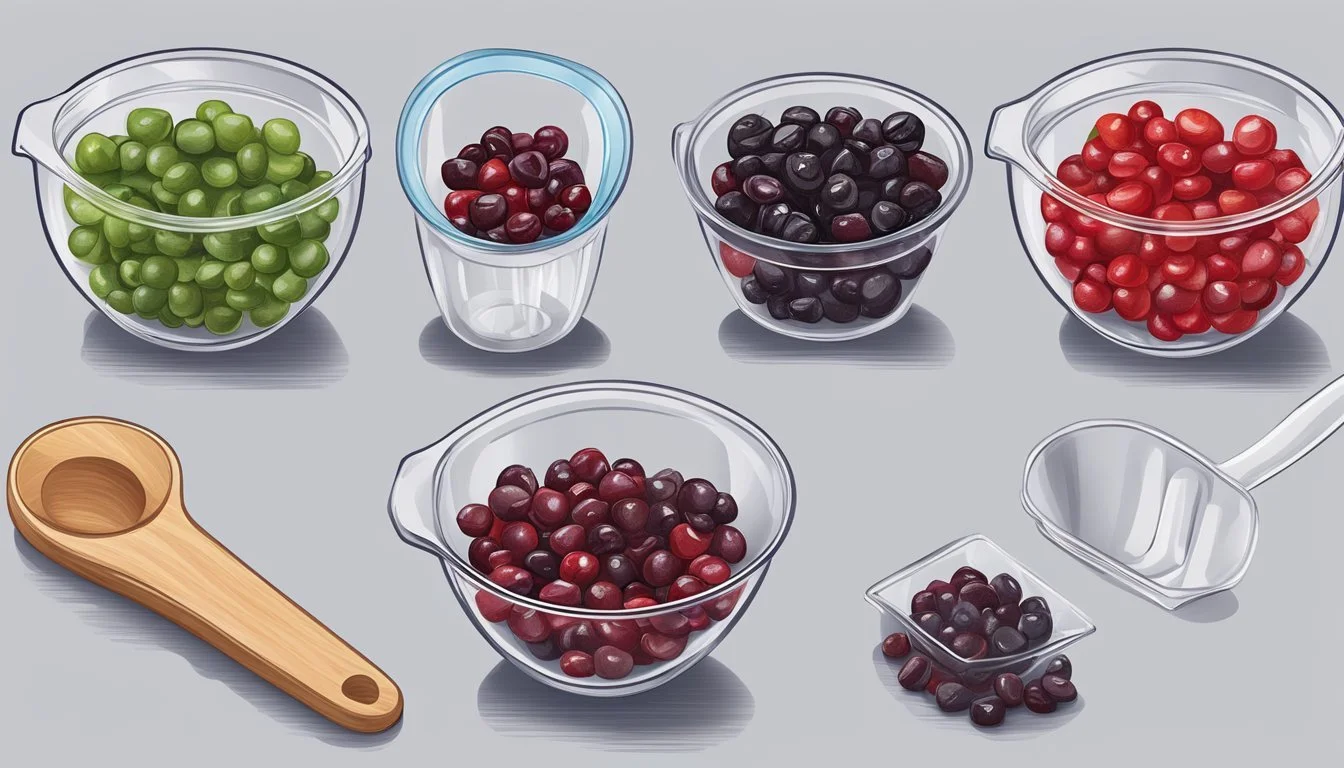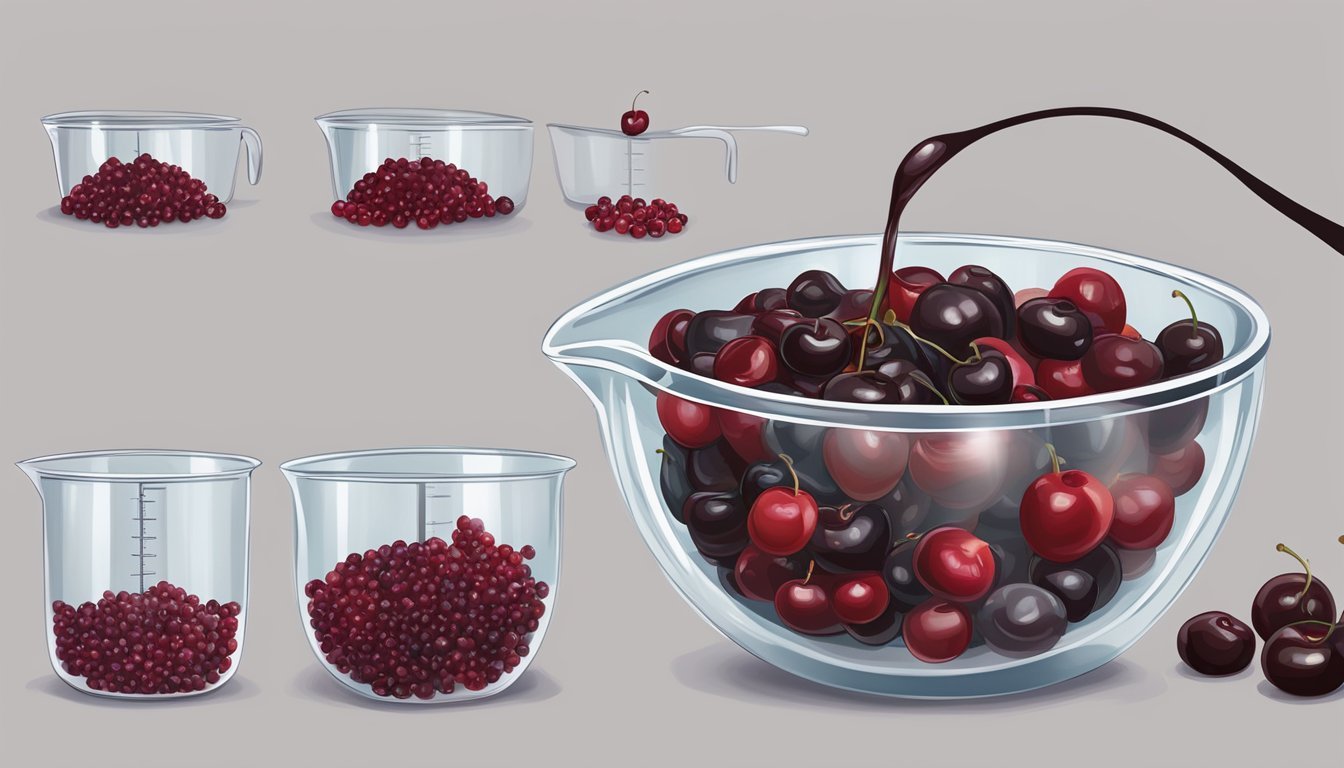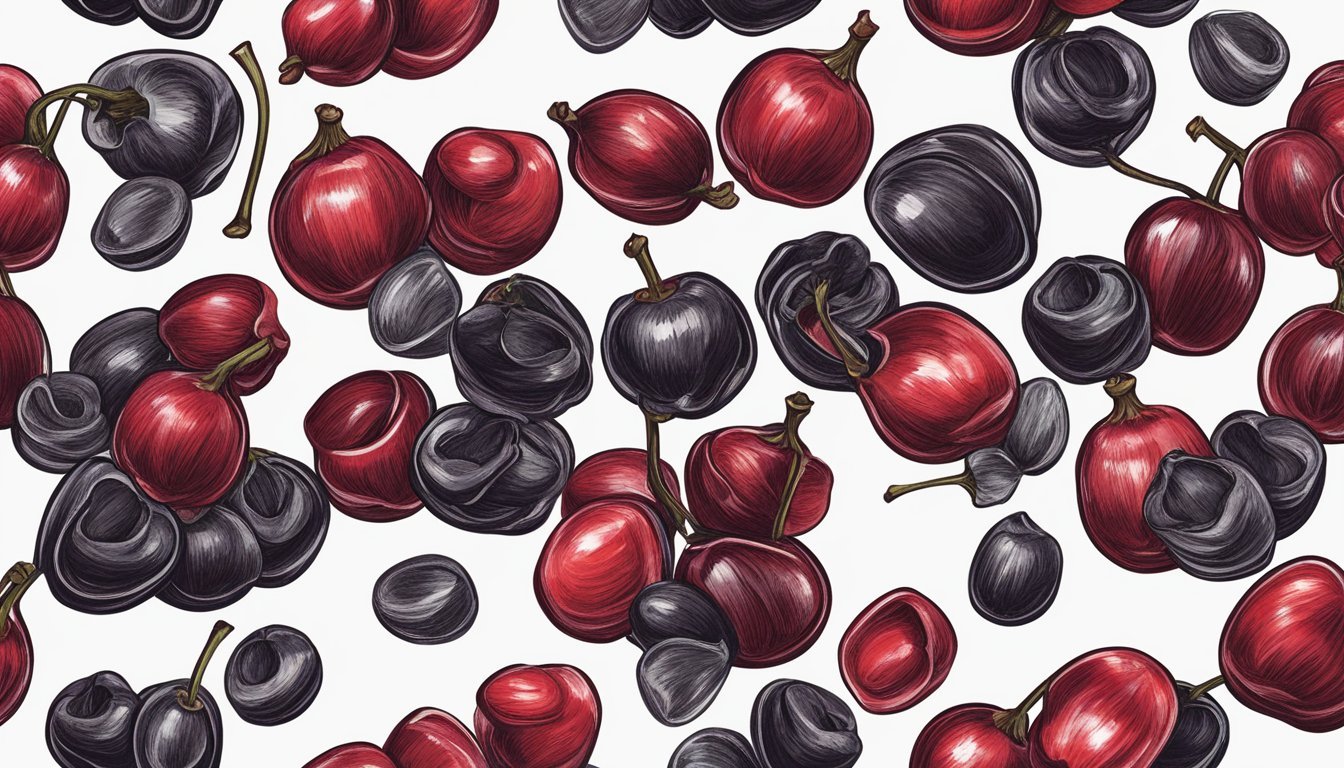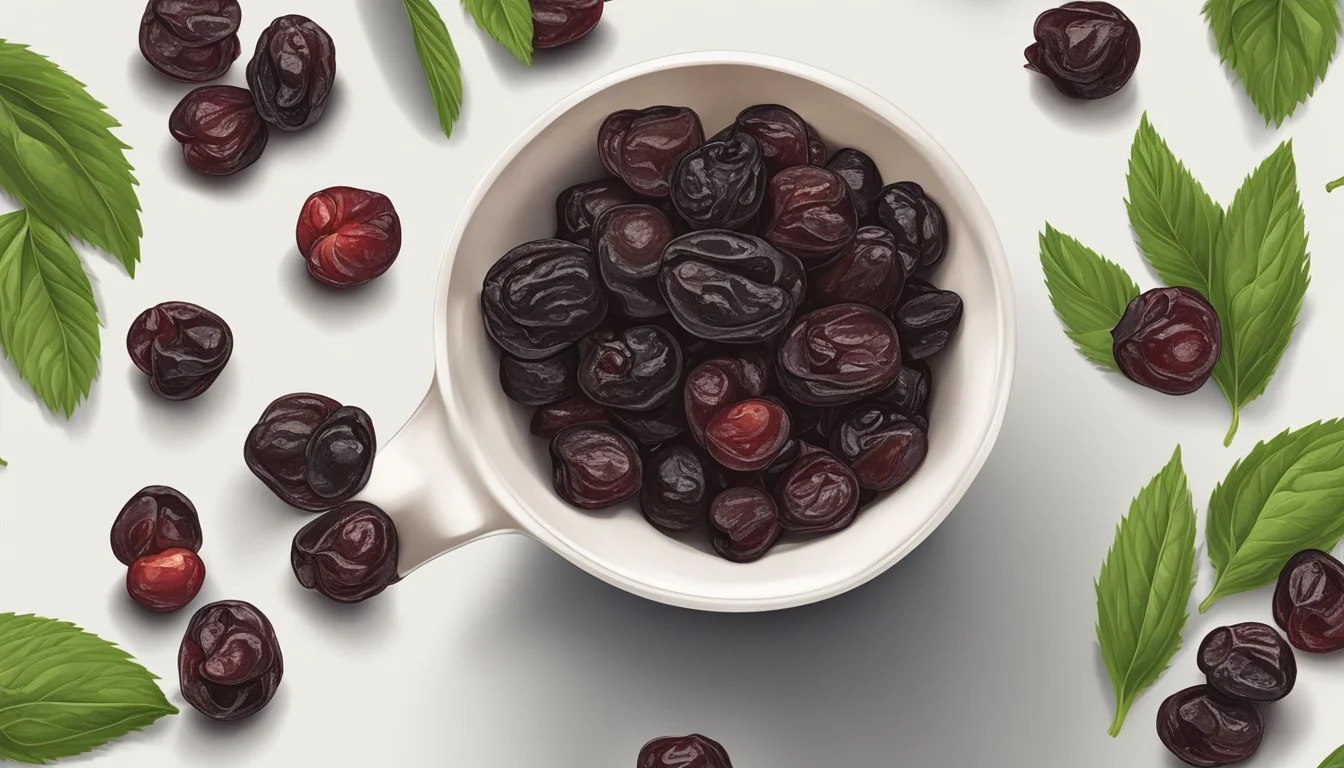How to Substitute Dried Cherries for Cranberries
A Simple Recipe Swap Guide
Dried cherries (how long do cherries last?) offer a versatile and delicious alternative to cranberries in various recipes. Both fruits provide a balance of sweet and tart flavors, and their textures are complementary, making dried cherries an ideal substitute in dishes that traditionally feature cranberries. When replacing cranberries with dried cherries, it is important to consider the inherent sweetness of cherries, and chefs may need to adjust the amount of added sugars in the recipe accordingly.
Incorporating dried cherries into recipes can bring a new dimension to the dish's flavor profile. Whether baking goods like muffins and cookies, or incorporating them into savory applications such as sauces and salads, dried cherries can seamlessly replace cranberries without compromising the integrity of the dish. The substitution tactic typically follows a one-to-one ratio, easing the conversion process for home cooks and professional chefs alike.
When opting for dried cherries in place of cranberries, it's also beneficial to evaluate the overall moisture content of the recipe. Dried cherries, like cranberries, impart both flavor and moisture into the dish they are used in. Ensuring that there is a proper balance of wet and dry ingredients will result in a finished product that maintains the desired texture and consistency.
Understanding Cranberries and Cherries
When substituting dried cherries for cranberries in recipes, it's important to consider their nutritional profiles, flavor comparisons, and texture differences. These factors will affect the outcome and balance of the final dish.
Nutritional Profiles
Cranberries and cherries both offer nutritional benefits but have distinct profiles. Dried cranberries typically have added sugars, as they are quite tart, whereas dried cherries can be found with or without added sweeteners.
Dried Cranberries:
Calories: Higher due to added sugars
Vitamin C: Significant amount
Fiber: Moderate
Dried Cherries:
Calories: Lower if unsweetened
Antioxidants: Particularly high in anthocyanins
Fiber: Comparable to cranberries
Flavor Comparisons
The flavors of cranberries and cherries both have a tangy element, but they diverge in their overall taste profile.
Cranberries: Sharp, tart, and often sour, leading to the frequent need for additional sweeteners.
Cherries: Range from tart to sweet, with tart cherries being a closer match to the sour aspect of cranberries.
Texture Differences
Dried fruit textures are pivotal in certain recipes, and understanding these will aid in achieving the desired consistency.
Dried Cranberries:
Typically firmer and chewier
May dry out more in baking
Dried Cherries:
Can be softer and plumper
Juicier, which may affect the moisture content of dishes
Recipes may need slight adjustments when substituting cherries for cranberries to maintain the intended texture.
Substitution Basics
Substituting dried cherries for cranberries in recipes requires attention to detail in measurement, hydration, and acidity to ensure the final dish retains its intended flavor profile and texture.
Ratio and Measurement Adjustments
When substituting dried cherries for dried cranberries, it is essential to use an equal ratio of 1:1 by volume or weight, as their sizes are comparable enough not to affect the bulk of the recipe. Recipes that call for a cup of dried cranberries, for instance, should also call for a cup of dried cherries.
Hydration Techniques for Dried Fruit
To achieve a texture similar to that of cranberries, dried cherries may need to be rehydrated. Soak them in warm water for approximately 10-15 minutes before use, or until they have plumped up to your desired consistency. This technique is particularly important if the recipe depends on the moisture from the dried fruit.
Acidity Modifications
Dried cranberries typically have a tartness that can be lacking in dried cherries. To mimic this acidity, one may add a small amount of lemon juice to the recipe. For each cup of dried cherries used, try incorporating a teaspoon of lemon juice to balance the sweetness and add a little tang.
Recipes and Usage Ideas
When substituting dried cherries for cranberries in recipes, it's important to consider the texture and sweetness that dried cherries will bring to the dish. They can often offer a similar tartness and burst of color that cranberries provide but may impart a slightly different flavor profile.
Baked Goods Applications
In baked goods, dried cherries can effectively replace dried cranberries in cookies, muffins, and bread. Use a 1:1 ratio when substituting dried cherries for dried cranberries. For a touch of added tartness, one might consider slightly reducing the amount of sugar or adding a squeeze of lemon juice.
Cookies: Replace cranberries with cherries in oatmeal or chocolate chip cookie recipes.
Muffins: Add them to batter for a twist on traditional cranberry muffins.
Bread: Incorporate into loaves for a moist and fruity flavor.
Salads and Relishes
Dried cherries can add an unexpected flavor to salads and relishes. Their sweetness pairs well with green salads and provides a chewy contrast to crunchy vegetables. Chop the dried cherries finely if a smaller bite is preferred or keep them whole for a more substantial addition.
Salad: Toss into a spinach salad with walnuts and feta cheese.
Relish: Mix with finely chopped vegetables for a sweet and tangy side.
Sauces and Jams Enhancement
For a substitute for cranberry jelly, jam, or sauces, dried cherries offer a delightful modification. When making a cranberry sauce or jam replacement, one might need to adjust the amount of sugar, considering dried cherries can be sweeter than cranberries.
Sauce: Puree dried cherries with orange juice for a flavorful twist on traditional cranberry sauce.
Jam: Cook down with sugar and water for a cherry-based spread.
Beverage Sweetening
Dried cherries can infuse beverages, offering a slight sweetness and tartness reminiscent of cranberry juice. Steep them in hot water or blend into smoothies for a cranberry-like flavor.
Tea: Add to hot water for a homemade cherry tea.
Smoothies: Blend with yogurt and other fresh berries for a nutritious drink.
Breakfast Foods Variations
Leverage dried cherries to enhance breakfast foods where normally dried cranberry substitutes would be used. Whether it's a granola mix or a pancake topping, cherries can add color and flavor.
Oatmeal: Stir into hot oatmeal for a fruity start to the day.
Pancakes: Sprinkle on top or mix into the batter for cherry-infused pancakes.
Additional Substitutes
When substituting dried cherries for cranberries in recipes, it's important to consider the flavor, texture, and color that cranberries contribute to the dish. The following substitutes can help maintain the integrity of your recipe while offering similar or complementary profiles.
Other Dried Fruits
Raisins: A common pantry staple, raisins can replace dried cherries, offering sweetness and a similar chewiness.
Dried Currants: Smaller and tart like cranberries, dried currants can mimic the tang of cranberries.
Golden Raisins: These are sweeter and plumper than regular raisins, adding a different hue and mild tang.
Dried Apricots: Chopped dried apricots can provide a similar texture with a more mellow tartness in baked goods.
Dried Blueberries: They share the similar size and burst of flavor, making them an easy replacement.
Fresh Fruit Alternatives
Raspberries: With their similar tartness and color, raspberries can be a fresh alternative in sauces and jellies.
Red Currants: Fresh red currants offer a brilliant color and perfect tartness for recipes requiring a cranberry-like zing.
Lingonberries: A Scandinavian berry with a flavor profile close to cranberries, suitable for sauces or preserves.
Sour Cherries: With their tart taste, sour cherries can be a flavorful stand-in in most dishes calling for cranberries.
Creative Sweetening Solutions
In recipes where the tartness of cranberries is countered by added sweeteners, consider these options:
Apples: Diced apples give a sweet taste and a soft texture in cooked dishes.
Pomegranate Seeds: They provide a juicy pop of tartness that can complement a recipe needing a cranberry substitute.
Prunes: Their deep sweetness is well-suited for baking and can be used when a less tart fruit is desired.





